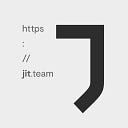A world without daily stand-up meetings
Imagine that one morning you open your email box and read an email sent by the CEO of the company you work for. This CEO sends the email to all employees about a new plan to increase the productivity of the company.
The daily stand-up, which previously consisted of a conference call, will soon be replaced by asynchronous status updates on Slack.
This change has already been implemented in the main project and will be rolled out to other projects within a couple of months. The goal is to increase productivity.
Slack allows team members to make progress and changes in real time. The change will ensure that team members receive information about the project in the right format at the right time. This way, the team will know what is happening and what to do next. Developers will be able to provide status updates at the beginning of the day, or at the end of the day.
Wouldn’t that be a change? In Agile project management, stand-up meetings are essential to keep team members on track and provide timely communication. However, in the best case scenario, stand-ups would most often be used for succinct status updates. Despite being brief, they are still costly because they impede developers’ productivity. Although advocates of the Agile/Scrum methodology may not accept it, scientific research has amply demonstrated that the cost of task switching is detrimental to productivity.
There is evidence to suggest that task switching might reduce productivity by up to 40%. In contrast, productivity rises several hundred percent when working uninterruptedly when in a “flow state,” as it is known in psychological studies.
Related to this problem is the tendency of stand-up meetings to ramble: An ad hoc conversation is often sparked by a ticket with inadequate details. A missing estimate prompts many others to speak up. A status update on a problem that has an impact on a number of team members prompts others to express their opinions. However, none of this is useful for carrying out a stand-up.
Asynchronous Updates
Daily stand-up meetings may be a waste of time, however, keeping your colleagues up to date with your progress is important. That’s why replacing daily stand-ups with asynchronous updates can be an alternative. The standardized approach for async dailies is posting an update in the team’s Slack channel at the beginning of the working day. Developers answer the following questions:
- What have you worked on yesterday?
- What will you work on today?
- (Optional) Is there anything you need help with?
- (Optional) How are you feeling today?
A few bullet points can adequately address each of these inquiries; and adding links to tickets as appropriate. Emojis may be used in your response to the previous query for emphasis and effect.
Tools for async dailies
There’s a whole host of tools available for asynchronous stand-ups such as https://standupalice.com/ (free and open source), https://standup.teaminator.io/ (freemium), and https://geekbot.com/ (freemium). These solutions have built-in features such as compiling responses from every team member and publishing aggregates in the channel at a specific time.

